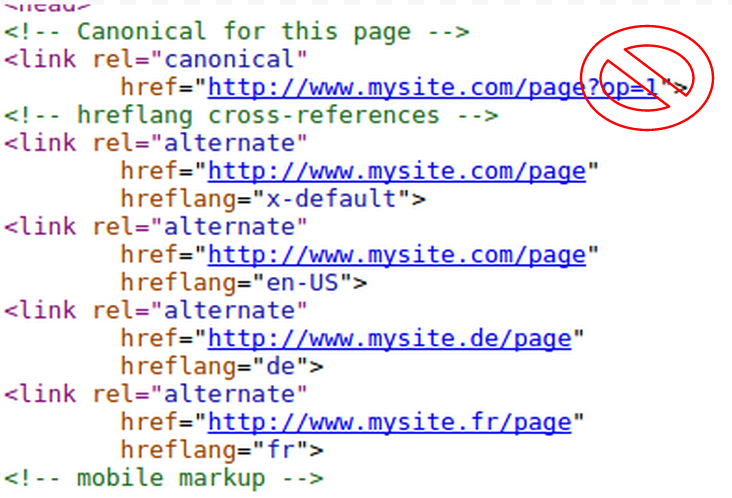
The issue with hreflang and specified canonicals is that the hreflang will be ignored when the specified canonical URL is not part of the hreflang pairs.
For those of you using hreflang for international pages: Make sure any rel=canonical you specify matches one of the URLs you use for the hreflang pairs. If the specified canonical URL is not a part of the hreflang pairs, then the hreflang markup will be ignored.In this case, if you want to use the “?op=1” URLs as canonicals, then the hreflang URLs should refer to those URLs. Alternately, if you want to use just “/page”, then the rel=canonical should refer to that too.
Finally, don’t use a rel=canonical across languages/countries, only use it on a per-country/language basis (don’t specify the “de” page as the canonical for the “en” version, otherwise we won’t index the “en” version).
Mueller also points webmasters to two resources for webmasters dealing with hreflang issues, a blog post from last year as well as their help center articles.
If you are unsure if you could be impacted by this issue, Google also has an hreflang tool you can use to troubleshoot any issues with your annotations, if you are using hreflang on any of your websites.
Jennifer Slegg
Latest posts by Jennifer Slegg (see all)
- 2022 Update for Google Quality Rater Guidelines – Big YMYL Updates - August 1, 2022
- Google Quality Rater Guidelines: The Low Quality 2021 Update - October 19, 2021
- Rethinking Affiliate Sites With Google’s Product Review Update - April 23, 2021
- New Google Quality Rater Guidelines, Update Adds Emphasis on Needs Met - October 16, 2020
- Google Updates Experiment Statistics for Quality Raters - October 6, 2020



